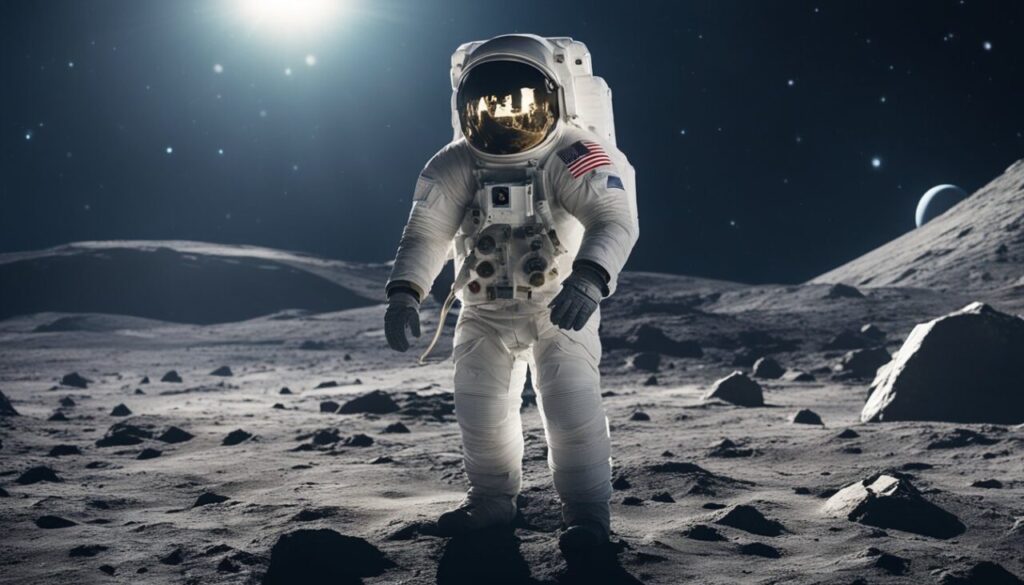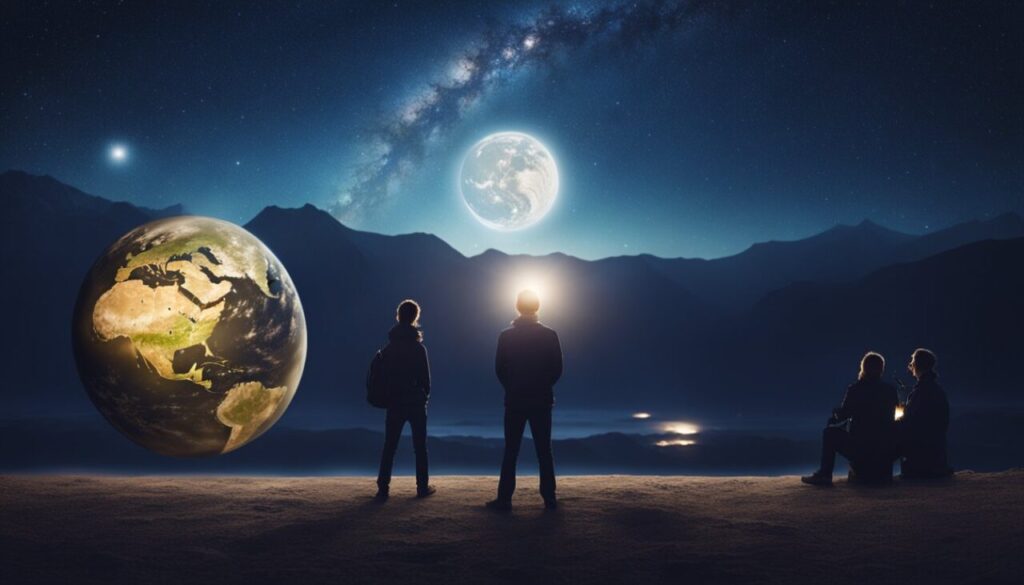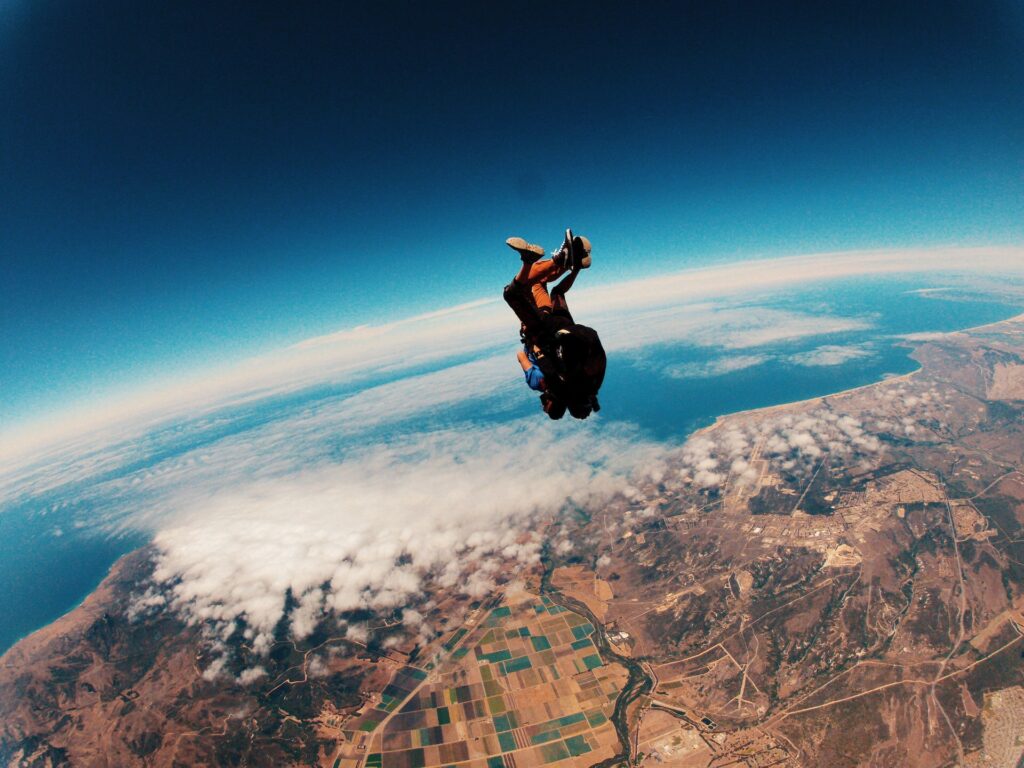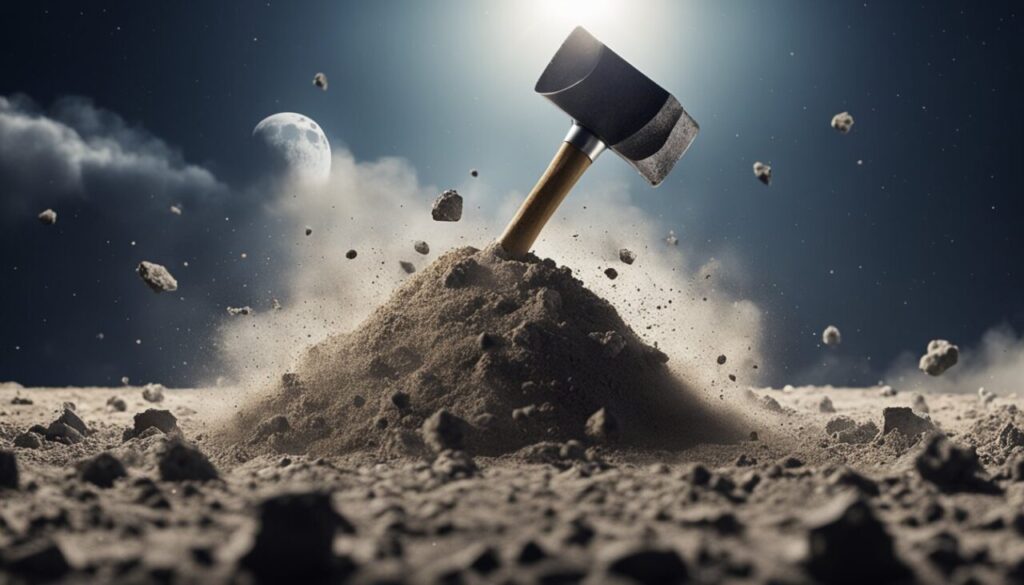
When a feather is dropped on the Moon, it behaves very differently than on Earth. Due to the Moon’s lack of atmosphere, the feather would fall at the same rate as any other object, like a hammer, reaching the lunar surface at the same time.
This surprising outcome is a result of gravity, which affects all objects equally regardless of their mass.
Most people think a feather would drift gently to the ground because of how it behaves on Earth.
Yet, on the Moon, there is no air resistance to slow it down. This unique condition allows both the feather and heavier objects to showcase the true nature of gravity in a vacuum.
During the Apollo 15 mission, astronaut David Scott demonstrated this by dropping a feather and a hammer simultaneously, proving that they hit the Moon’s surface at the same time.
So let’s explore this interesting phenomena in more detail.
Feather Dropped on Moon from 3.28 Feet Height (1 meter) – TL;DR Step by Step

- 1st Microsecond: The feather is released from a height of 1 meter or 3.28 feet.
- 0.1 Second: Feather is now much closer to the hand of the person who released it (assuming a person is doing this experiment) than to the moon’s surface.
- 0.5 Seconds: The feather is almost halfway to the surface.
- 1 Second: The feather continues to fall. It is accelerating toward the lunar surface. It is now near the surface.
- 1.1 Seconds: The feather now reached the moon’s surface.
In summary, a feather dropped on the Moon falls slowly and smoothly, landing without resistance.
But how did we calculate this?
Let’s see:
To calculate how long it would take for the feather to fall from a height of 1 meter, we can use the equation for free fall:

Where:
- t is the time it takes to fall,
- h is the height (1 meter),
- g is the acceleration due to gravity on the Moon (approximately 1.625 m/s²).
Let’s plug in the values:

So, it would take approximately 1.11 seconds for the feather to fall from a height of 1 meter on the Moon.
Interesting, huh?
Okay, so now let’s dive into more details explaining exactly why this is happening.
The Moon’s Environment

The Moon has a unique environment that greatly affects how objects behave. As mentioned, key factors include the absence of an atmosphere and the strength of its gravity.
Each element plays a crucial role so let’s dissect each one.
Lack of Atmosphere

The Moon has virtually no atmosphere. This means there is no air to provide resistance against falling objects.
On Earth, feathers fall slowly due to air pushing against them. Without air, objects on the Moon fall at the same rate, regardless of their mass or shape.
In this environment, a feather and a hammer would drop to the lunar surface at the same speed.
Furthermore, the lack of atmosphere contributes to extreme temperature changes on the Moon.
Daytime temperatures can reach up to 127°C (260°F), while nighttime can drop to -173°C (-280°F).
Surface Gravity

The Moon’s surface gravity is about 1/6th that of Earth’s. This lower gravity affects how objects fall and interact with the surface.
When a feather is dropped on the Moon, it does not experience the same weight or force as it would on Earth.
The reduced gravity allows the feather to fall more slowly compared to Earth. It takes longer to reach the surface, making it easier to see the effect of gravity.
In comparison, on Earth, it lands quickly due to stronger gravitational pull.
To be exact, using the same example as above (1 meter or 3.28 feet), it would take 0.45 seconds for the same feather to fall to the Earth’s surface.
And so finally, the question remains:
Would Any Object Fall Faster than a Feather on the Moon?

The simple answer: NO!
On the Moon, no object would fall faster than a feather if they are dropped from the same height.
As mentioned numerous times, this is because the Moon has no atmosphere, meaning there is no air resistance to slow down lighter objects like a feather.
Without air resistance, all objects, regardless of their mass or shape, fall at the same rate when acted upon by gravity alone.
This phenomenon is a direct consequence of the equivalence principle, which states that in a vacuum, all objects experience the same acceleration due to gravity.
So, on the Moon, a feather, a rock, or even a spacecraft part would all fall at the same speed from the same height.
Nice, huh?
Note: If you’re interested in similar articles, on the topic of “What would happen if”, you can check:
- What would happen If The Moon disappeared?
- What Would Happen If The Moon Exploded?
- What Would Happen If Jupiter Disappeared?
- What Would Happen If You Fell Into A Black Hole?
- What Would Happen If The Earth Stopped Spinning?
- What If Everyone On Earth Jumped At The Same Time?
- What would happen if we stopped fishing?
- What would happen if water disappeared on Earth?
- What would happen if lying never existed?
- What would happen if everyone was naked?
- What would happen if gravity suddenly disappeared?
- What would happen if everyone stopped having children?
- What would happen if mosquitoes went extinct?



























